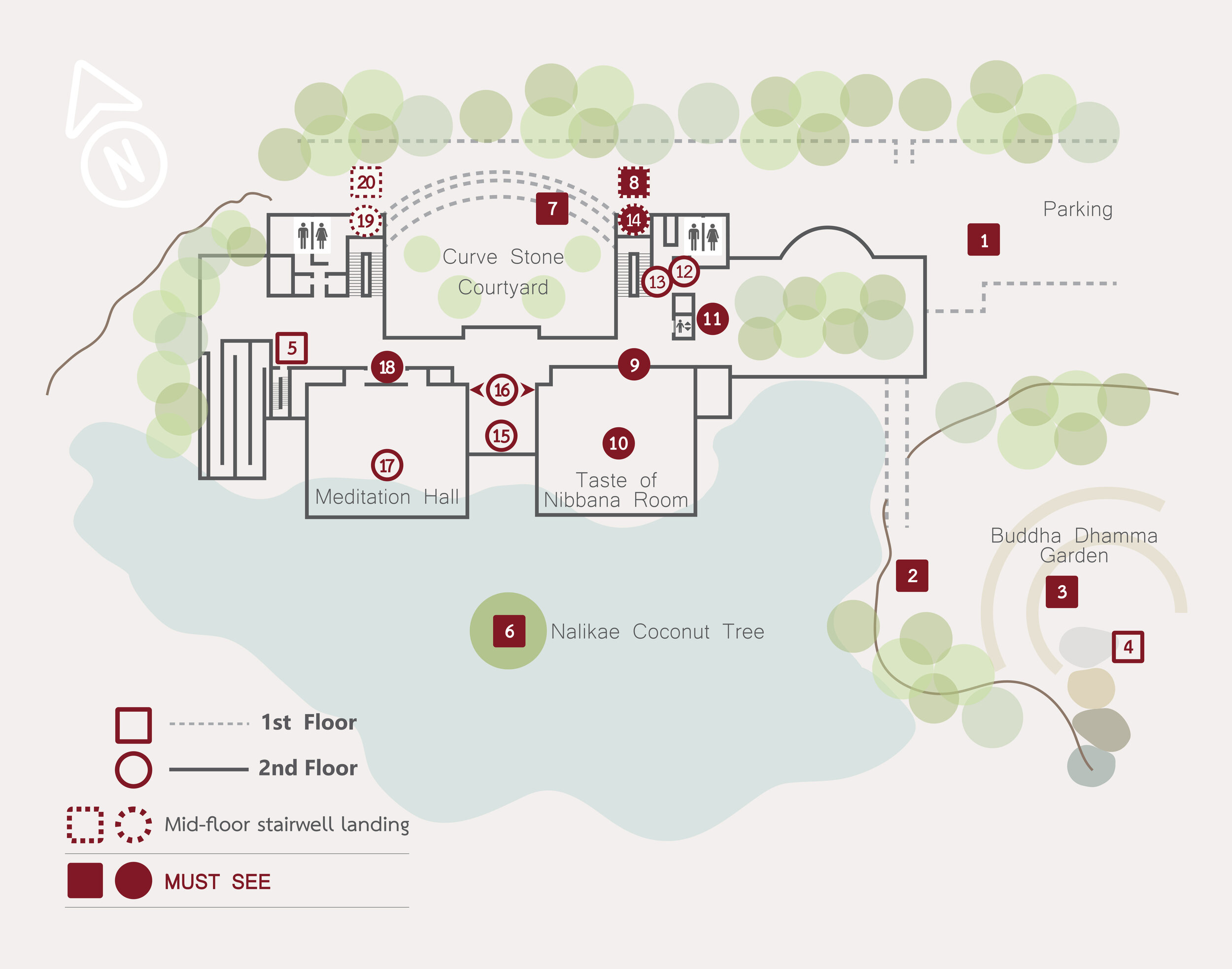Brahma Creating the World
How humans were created
These paintings depict a traditional folktale which Buddhadasa Bhikkhu included along with the following description in his book The Spiritual Theatre: A Legacy for Mankind.
Seeing that the world was devoid of life, Brahma then decided to mold “humans” out of the Earth’s soil and gave them the task of making this world a beautiful and peaceful place. He granted them a lifespan of 30 years and also promised to spare them the difficulties of doing hard work and having any responsibilities.
Brahma then realized that humans would need help with tasks of labor throughout their lives. He therefore created “oxen,” giving them 30 years to live. However, the oxen did not think that serving humans for 30 whole years would be very fun, so they begged Brahma to reduce their lifespan to only 10 years. Brahma granted them their wish. Then out of greed for a longer life, the humans asked to be given the 20 years from the oxen’s lifespan. Reluctantly, Brahma agreed to extend the lifespan of humans to 50 years.
Brahma’s next creation was “dogs.” The god wanted them to help the humans guard their property and belongings day and night during the 30 years of life he gave them. Not wanting such a long and tough life, the dogs begged to live only 10 years. The humans, once again, asked Brahma for the 20 years that the dogs declined, thus increasing their lifespan to 70 years.
The next day, the finicky Brahma wanted to make sure the humans had proper entertainment. He created “monkeys” for their amusement, giving them a lifespan of 30 years. Burdened with such a demanding role, the monkeys requested that their lives be shortened to 10 years instead. The humans greedily pestered Brahma for the 20 years that the monkeys gave up. Brahma, now getting fed up with the humans, slapped on those additional 20 years, stretching their lifespan to 90 years. After that, Brahma stopped creating and let all beings live out their given lifespans.
For humans, the first 30 years—their initial lifespan—are a time of enjoyment and sensual pleasures. Since the next 20 years were taken from the oxen, humans aged 30 to 50 are burdened with hard work and family responsibilities. From 50 to 70 years of age, humans live like dogs, losing sleep while guarding their accumulated possessions and worrying about their loved ones. In the last stage of life, from 70 to 90 years, humans become monkey-like. Forgetful and awkward, they act rashly, becoming a laughing-stock and an annoying burden to their offspring. Human beings then end their lives pathetically, without fulfilling Brahma’s true purpose for creating them.
Brahma’s intention was for humans to develop their lives through the four stages of life, or the four Ashrama, according to the Hindu Manu Smrti, or Laws of Manu. These four stages of life are:
1. Brahmacharya—the “learning stage” wherein one acquires knowledge, practices self-discipline and learns to live a life of righteousness;
2. Grihastha—the “householder stage” wherein one works and takes responsibility for one’s life and family, gains sensual pleasures in order to truly understand them, and then let go of them, eventually seeking higher happiness instead of incessantly working and endlessly craving;
3. Vanaprastha—the “retirement stage” wherein one gradually withdraws from worldly commitments and attachments to find inner peace, and aims for spiritual insight to see things the way they truly are, and;
4. Sannyasa—the “renunciation stage” wherein one exudes worldly and spiritual wisdom in all aspects of life and thus becomes a respected spiritual guiding light. Instead of being a ridiculous burden for the younger generations, one becomes a charitable giver and “holder of the lantern,” who illuminates the path of wisdom for others.



